Guide: Points Loyalty Program
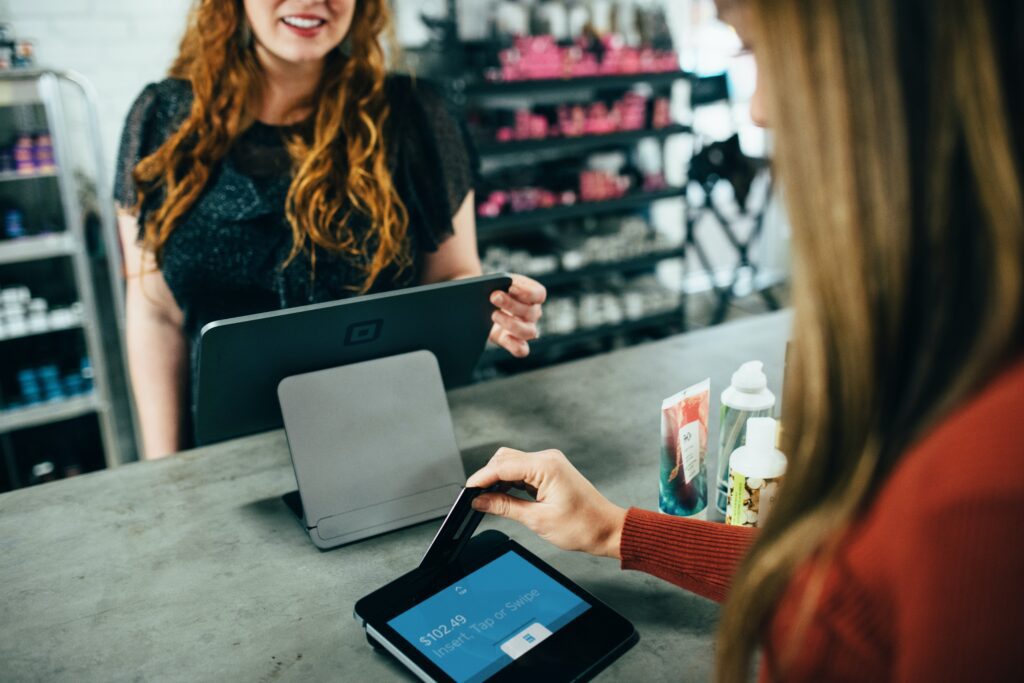
. In this article, we’ll take you on a journey through the world of points loyalty programs, from their definition and design strategies to the industries that swear by them. So, buckle up and get ready to unlock the secrets of loyalty rewards!
Webinar: MyLoyal x OnlinePOS. Gæsteloyalitet – Det nye sort i restaurationsbranchen
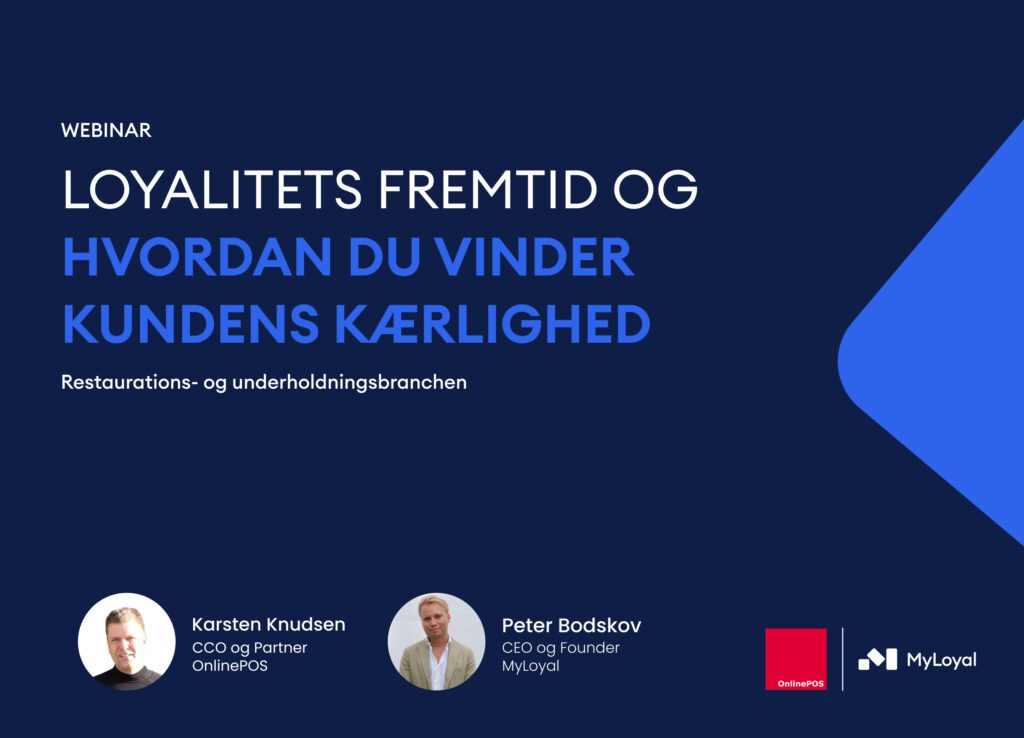
Webinar: MyLoyal x OnlinePOS. Gæsteloyalitet – Det nye sort i restaurationsbranchen Digitalisering i branchen stormer fremad og det samme gælder indenfor loyalitetsprogrammer. Kom med til vores gratis webinar hvor vores CEO, Peter Bodskov sammen med Karsten Knudsen, CCO i OnlinePOS dykker ned i hvordan du kan forbedre din gæsteloyalitet og øge dit salg. Have any questions? Get in touch! Peter Bodskov CEO & Founder, MyLoyal Contact Karsten Knudsen COO & Partner, Online POS Contact We can help your business to grow Book A Demo
Guide: Tiered Loyalty Programs
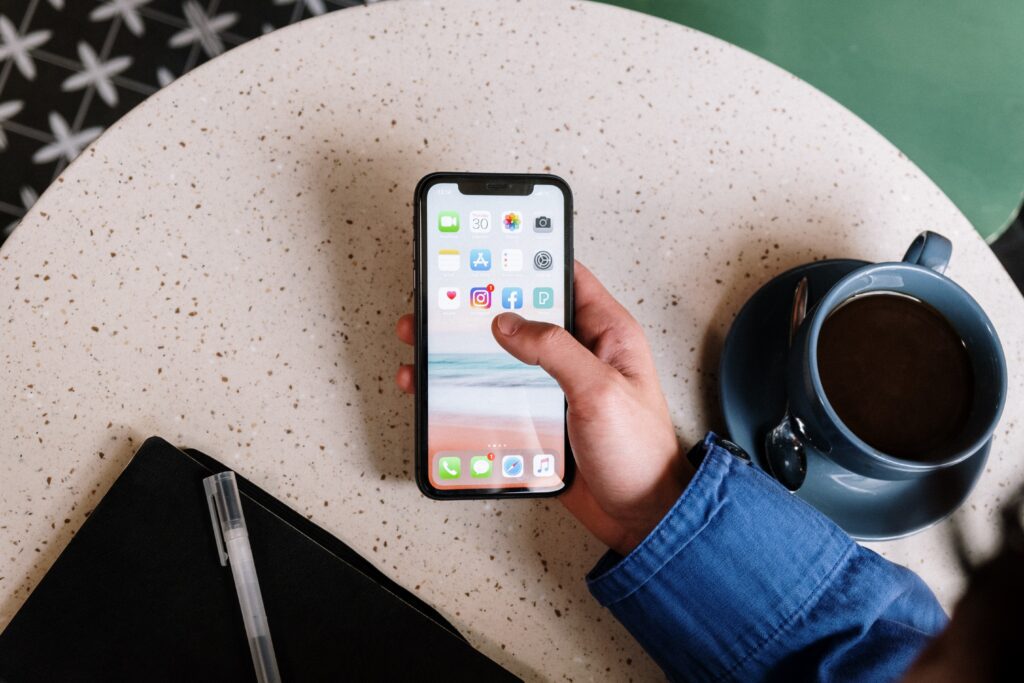
Guide – Tiered Loyalty Programs Loyalty Programmes are one of the best ways to motivate your customers to keep buying from you. The world of loyalty is fascinating, with programmes coming in all shapes and sizes to fit your customers’ demands. Choosing the right loyalty program type is vital to provide your customers with the most value. But which type will fit your business and keep the focus on your customers? Today we are going to explore the tiered loyalty program. We will break down the best practice and the pros and cons of tired loyalty. What is a tiered loyalty program? Tiered loyalty is all about reaching the higher tier level and unlocking new benefits or status rewards. Simplified down? Tiered rewards can be based either on spending or on how long they have been with the brand. For example: if you have had a customer for over 5 years, they are a golden customer! ! Typically the programs are segmented into tiers, with a standard programme having at least 3-4 tiers, with the rewards getting gradually better with each tier. When customers show commitment to the brand, they automatically move into a new tier and become eligible for higher rewards. Need a visual to help you? Check out some of our client’s loyalty rewards programs. How to design the best tiered program possible? There are many things you can do to create the best loyalty program, but here is a guide how to build tiered loyalty programs. To start: Clearly define each tier; what must the customer do to achieve the next level? What rewards or perks are available in each tier? As customers reach higher tiers, award them benefits such as gifts, additional points or higher earning rewards going forward Gamify the journey of getting points with stars and other gamification elements. Create a visual aid to show how customers how close they are to getting to the next tier Go big for the customer who has reached the highest tier. Roll out the red carpet. This can be anything from first access to a new product to an exclusive event invite. With set guidelines and rewards – it couldn’t be easier! So, what are the main benefits of tiered loyalty programs? Long-Term Customers? Reward City! There are several loyalty program benefits businesses can reap rewards from by introducing tier levels. Up first – Increased spending and order frequency. Tiered loyalty programs encourage customers to spend more money with a business in order to reach the next level and get better rewards. More rewards for your customers – increased revenue for the business over time—a win-win. The drawback? Rewards are not instant. Customers have to commit long-term to the program to really get any value back. Build Long-Lasting Relationships With Customers Tiered Loyalty programmes can help make your loyalty more engaging & help boost customer engagement. You can increase engagement and loyalty by rewarding your customers for more than just purchases. Naturally, they will speak positively about your brand, building its awareness. The downside? Customers who are infrequent visitors will have much lower gratification than your regulars, so it will be harder to build long-lasting loyal relationships. Increased Competitive Advantage! Looking for a third reason? Fine, here is another for you. Tiered loyalty programs are key to helping add value to your proposition. By offering improved rewards at higher tiers, you can encourage customers to switch to you instead of your competitors and reap the rewards for staying loyal in the long run. Why go to a competitor when you offer next-level rewards for staying loyal? Here is a quick summary: Pros Cons Heavily rewards your most loyal (highest-value) customers. Increased spending and order frequency! Rewards are not instant – so they are not as rewarding for new customers Easy to customise so your program stands out Higher rewards can feel unattainable, creating a heavy barrier to entry Easy to track customer data Lower gratification for infrequent customers Rewards can also be non-monetary (e.g. skip the line, access to exclusive products or better customer service) Build Long-Lasting Relationships through customer engagement What industries use tiered programmes the most frequently? Airlines can be identified as having the most known tiered loyalty programs, followed by the hospitality industry, such as hotels and travel companies. But these types of programs are increasingly popular among retail chains that want to reward long-term loyalty and restaurants. Check out some of our clients using a tiered loyalty program. Like what you have read? Sign up to our newsletter By entering your email address, you consent to our Privacy Policy We can help your business to grow Book A Demo
The Technology Trends For 2023 That Will Take Your Restaurant To The Next Level
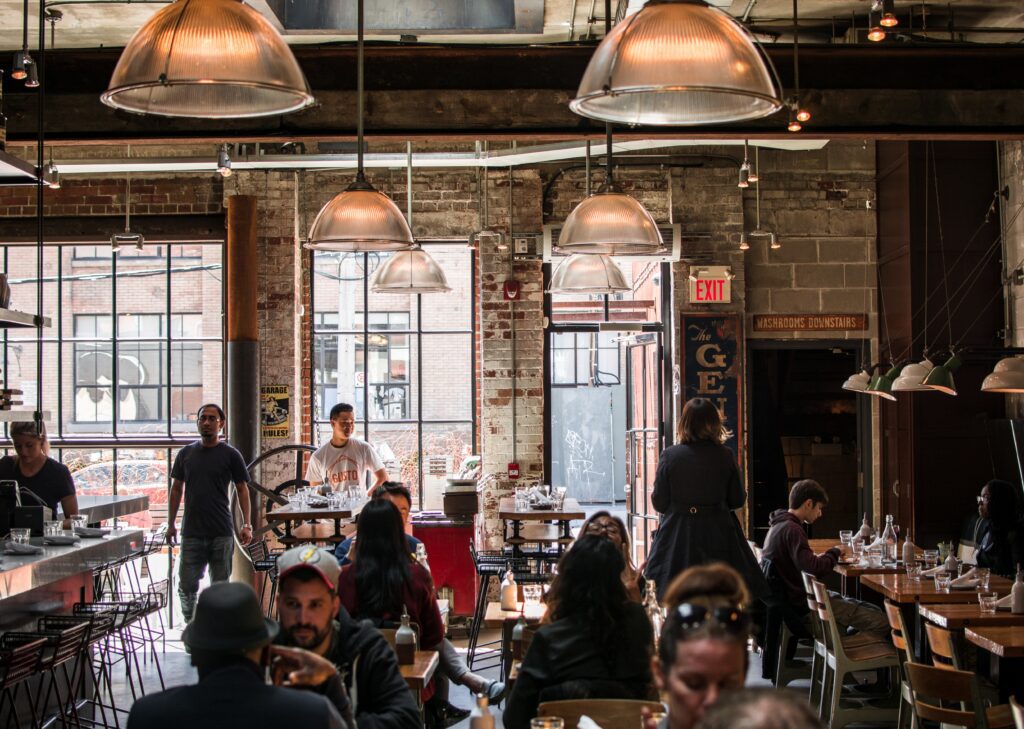
The Technology Trends For 2023 That Will Take Your Restaurant To The Next Level With the ever-growing opportunities that new technologies provide, restaurants have started implementing novel solutions to their operations to remain competitive in a market characterised by digital transformation. This post will dive deep into the essential technological changes every restaurant needs to implement to stay competitive. Table of Contents In 1965, Gordon Moore stated that roughly every two years, the number of transistors on microchips would double. Commonly referred to as Moore’s Law, this phenomenon has been widely implemented to showcase the rapid advancement of computational technology. With the ever-growing opportunities that new technologies provide, restaurants have started implementing novel solutions to their operations to remain competitive in a market characterised by digital transformation. This post will dive deep into the essential technological changes every restaurant needs to implement to stay competitive. Increased use of restaurant- based mobile apps Ease of access to mobile devices has promoted restaurants to tailor their desktop websites to be mobile-friendly while many take the next step and provide a mobile app to their clients. The change from a website to an app has been rapid due to the onset of the Covid pandemic, which caused many clients to switch to apps that allowed them to order food. App development had previously been an expensive process that only larger chains could afford, but nowadays, getting an app for your restaurant is cheaper and more accessible than ever due to SaaS companies. Integration across platforms and POS systems Integrations with point-of-sale systems have restructured the way restaurants work. Although not novel, their recent integrations with online ordering systems, kitchen display programs, self-ordering kiosks, and cloud technology have made tracking sales and ordering efficient and convenient. Another recent integration and one of the key developments is restaurant chains offering automatic membership in their loyalty programs for customers who download their respective mobile app. This creates a win-win situation, where customers who are most loyal to the restaurant get a discount and other members-only offers as a thank you gift. Loyal customers generate 30% more revenue than non-loyal (based on MyLoyal internal data), which is why having an easy-to-access loyalty program is of utmost importance. Value of guest data & technology to access it in one place Each visit to the restaurant by a customer generates a lot of valuable information that needs to be collected to plan effective sales and marketing tactics that can be used for: Table turnover optimization Operations improvement Lifetime value and repeat customer trends Sales forecasting Customer profiling and segmentation For example, understanding the sales data per hour can reveal opportunities in operations and help to understand how to plan the shifts. Likewise, analysis of the collected data from your system can be used to identify why certain products sell well, who ordered what and other front-of-house insights. Recent technological developments have allowed us to combine data from your payments and reservations system to construct a full customer profile and give you the information to provide customers with the best service possible. Furthermore, what’s even more important is having a good overview of the information and its use. According to Financesonline, 56% of consumers want to know how restaurants use collected personal data. Having the data in one place makes it accessible and transparent for customers. The rise of the All-in-one platform Besides the use of technology to track customer behaviour, a growing number of restaurants are adopting platforms that also allow them to monitor their internal operations efficiently. Of course, the traditional pen-and-paper methods still have their place. Still, by adopting technological solutions for management control, restaurants can expect to streamline their efficiency and thus also provide better service for their customers. Examples of how you can use technology for internal management: Conducting daily employee pre-shift and post-shift wellness checks. Monitoring the fulfilment of sanitation and cleanliness protocols plus the ability to communicate new government regulations instantly Managings restaurant-based compliance covering regional regulations tailored for each location, along with access to corporation-wide quality and safety protocols. Food safety and temperature monitoring and getting a detailed overview of the returned dishes by customers The technology trends for 2023 conclusion This post has shown that adapting trends to your restaurant benefits the business and the client. Although it is important to remember that every restaurant is unique, and there is no silver bullet to make your business stand out, it’s essential to consider the different ways you can implement the trends. Curious about the solutions that will allow you to get the most out of the trends? Write to us if you want to learn more about the technological solutions used in a modern restaurant. Looking forward to hearing from you. Like what you have read? Sign up to our newsletter By entering your email address, you consent to our Privacy Policy We can help your business to grow Book A Demo
Boost the performance of your restaurant by adapting these 4 industry trends

Boost The Performance of Your Restaurant by Adapting These 4 Industry Trends Whether you own a small diner, a massive food chain or a coffee place, adapting novel restaurant industry trends to your operations increases your customers’ happiness and your company’s profitability. Over the last few years, we have seen the restaurant industry go through difficult times while everybody felt the pain and suffering that various Covid-19 regulations have caused to our dining experiences. Customer behaviour changes led many restaurants’ to adopt novel solutions to face problems the regulators set on them. Whether you own a small diner, a massive food chain or a coffee place, adapting novel digital restaurant industry trends to your operations increases your customers’ happiness and your company’s profitability. To give you an overview of the ever-growing opportunities that trends provide to restaurants, we are covering the 4 most typical trends consumers are experiencing in the restaurant industry. Demand For New Value Propositions An ever-growing number of customers expect to receive extra service from restaurants. According to Squareup (2022), half of the restaurateurs have added new products or services to their offerings due to COVID-19, with 75% saying those changes are still in place. These propositions can range from providing subscriptions, adding grocery and retail products to their offering or selling different DIY products, for example, cocktail kits. The differences between the retail, restaurant and service industries are becoming smaller, and they are thus slowly merging into one entity. This means that in the future, it will be common to see a restaurant that hosts baking workshops and sells the equipment necessary to bake your bread while simultaneously running a popular coffee shop. The good news is that consumers are welcoming these new restaurants with open arms. As stated by Squareup (2022), 44% of customers at a restaurant have made a purchase outside of their standard meal, and 30% said they purchased retail items from restaurants several times. As consumers embrace these value propositions, there’s a reason to implement additional revenue streams to your restaurant business, especially because it increases profitability and customer satisfaction. Direct Access The rise of services like home delivery has had a knock-on effect on customers’ craving for convenience, and they will continue to expect it for years to come. As reported by Toast (2019), 54% of guests believe that an online reservation system is one of the most important technological solutions a restaurant can offer. This speaks volumes, and with the trend of wanting to interact with restaurants online, whether it is booking tables, placing orders, providing feedback, viewing menus, or keeping up with the latest news – customers will expect to be able to do it online. The desire for comfort is accompanied by an expectation of personalisation. Guests expect the restaurant industry to be as personal and relevant as any other industry. When consumers receive personalised emails about relevant products from their favourite retailers, they expect restaurants to offer a similar experience: from marketing messages to menu offers. Personalisation With the rise of Big data companies such as Amazon, Netflix, and Starbucks, people have gotten used to the personalization and messaging that is relevant uniquely to them. Customers increasingly demand data-driven communication rather than receiving automatically generated offers, which means that consumers are willing to share their data with restaurants they love as long as they provide them with the expected experience. This new reality explains why many restaurants are turning to loyalty solutions to capture consumer preferences and engage with clients in a structured way. One of the many ways data can drive a curated experience is by rewarding customers according to specific parameters and evoking positive brand loyalty from guests. While the traditional ways of rewarding clients (providing free coffee on birthdays or adding discounts on lunch offers) still work, restaurants can, for example, consider upselling dishes for the top 20% of loyalists on future visits. In addition, having command over the data provides endless opportunities for strategizing sales and leaving customers more satisfied with the overall experience. TakeAway Trend Continues Customers’ eating habits are constantly changing. The unexpected onset of Covid-19 boosted different trends within the restaurant industry, one of the most prominent ones being food delivery. Less than two decades ago, restaurant-quality food delivery was still primarily limited to fast foods like Hamburgers or Pizzas. Mckinsey (2021) reported that food delivery is a global market worth 1150 billion DKK, more than tripling since 2017. In the U.S., the market more than doubled during the COVID-19 pandemic after a steady historical growth of 8% (Mckinsey, 2021). The introduction of engaging, user-friendly apps and technology-driven networks, coupled with changing consumer expectations, have made ready-to-eat food delivery a key interest for many restaurants. Lockdowns and physical distancing requirements early in the pandemic boosted the industry significantly, with delivery a lifeline for struggling restaurants. In the years to come, it is expected to continue to be a part of the food scene, going so far as some restaurants solely operating as virtual kitchens without dining halls. The industry is growing, and so are the customer preferences from whom to offer services changing over time. Many clients report that they prefer to order directly from the restaurant, with a whopping 70% of consumers choosing to order directly from restaurants rather than third-party suppliers (Hospitalitytech, 2018). Instead of using online food ordering platforms like Uber Eats, we can expect restaurants to follow the trends of big fast food chains like McDonald’s and KFC by investing in developing their comprehensive online platforms to catch the attention of loyal customers. Conclusion This post has shown that adapting restaurant industry trends benefits both the business and the client. Although it is important to remember that every restaurant is unique, and there is no silver bullet to make your firm stand out from the rest, it’s important to consider the different ways the trends can be implemented. Curious about the solutions that will allow you to get the most out
How To Make First-Party Data Work For You
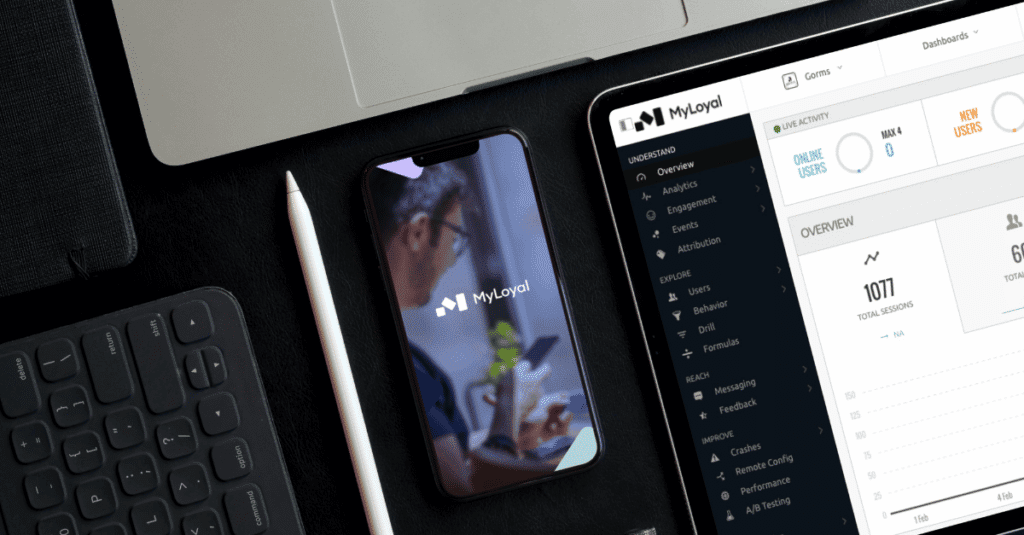
How To Make First-Party Data Work For You Data this. Data that. People are obsessed with data right now, particularly customer data and there is a very good reason for it. It is essential for companies to achieve multiple goals, such as retaining more customers, optimising marketing spending and increasing sales/traffic to store; but that is just the tip of the iceberg. With third party cookie data coming to an end, marketing teams must accept a future where consent-based advertising is the norm. Table of Contents This is all well and good, but the rising number of privacy laws and the crackdown on third-party cookies have forced the hand of many companies, initiating a re-think of their data strategy. As we take another step forward into an increasingly cookieless world, next-generation loyalty programs are going to gain a prominent place for companies wanting to create a seamless customer experience; through relevant offers and information. Enter a primary source of first-party data. Let’s break down the intricate world of data and loyalty programmes Let’s Start at the beginning: First-Party Data & Zero-Party Data First-Party and Zero-Party Data could be terms you have seen numerous times or have never heard of, so let’s break it down. First Pary Data (FPD): The information your collect through your own channels; including your website, mobile app, Point Of Sale (POS) or any other information you have collected. It is one of the most trustworthy and accurate types of data out there and there are minimal privacy concerns involved. Typically this data includes usage patterns, purchase baskets etc. The more sources you have connected, for example, your POS or a loyalty app, the more accurate your customer profile is. Zero Party Data (ZPD): This is the information that your customers willingly or proactively share with you, for example from profile building or in-app information. This data covers a wide range of topics that normally would be difficult to predict, such as first or last name, data of birth (DOB), favourite store and their satisfaction rates. Thankfully there are numerous ways to collect this data but the fan favourite is through a loyalty program. Why is Zero-Party Data so important & how do we capture it correctly: It is fair to presume ZPD holds to answers to all our problems when it comes to customer personal preferences. This is all well and good but it must be collected ethically, otherwise you are paralleling to a stick situation – so how do we do this? 54% of shoppers said they are open to sharing personal information and shopping preferences with retailers in order to receive personalised offers. Accenture Let’s focus on millennials for a quick moment here, data sharing in return for value is very common, but by providing that information the customer has an expectation of better value. It is essential that after you have collected this new information, you provide better value to the end-user, otherwise you will end up misleading your customers, which is detrimental to your brand. A customer’s willingness to share their information can be heavily affected by their opinions on the type of value you are offering – they might not be as attracted to a one fits all discount or an irrelevant product as they would be a long-term member bonus. Customers might also be put off if you are offering a value add that doesn’t apply to them; imagine you live in Copenhagen but you keep getting offers to visit a store in Berlin. The value/incentives you offer have to be relevant. Otherwise, they will fall flat. In order to capture more information you need customers to complete their digital profiles, you need this information to make more attractive offers, so your customers will provide more information and purchase your products. It is very much like a dog chasing its tail – but how fun is that! A great way to get the ball rolling is to offer birthday gifts for date of birth entry or having customers enter profile details as part of the onboarding process. The basic rule of thumb is to ask as few question as possible on the registration form, so you dont deter people from joining in the first place. If you focus on getting the essentials; name, email and location, you can prevent impatient customers from leaving, increasing your enrolment rates, while still having enough information to retain them down the line. A double win! How can First Party Data be used to grow your business? The goal for pretty much every business in the world, how can we harbour this resource to help us grow? You have collected the data, now what? The key to this is to have a wholistic customer full 360 overview by combing all your data sources. A little secret short-cut? POS system and loyalty program integration. It. is. A. gamechanger. We have explored the power of POS X Loyalty before – check it out here. The 2nd step is to have all the data stored in one easily accessible place, allowing you to have a lifecycle engagement with your customer at all points in time. It is all about understanding your customers behaviours, picking up cues along the way that can provide easier ways to target them with personalised accurate offers. Let’s break it down further: Understanding Your Audience: What if it was possible to take a little peak inside customer’s psych? Jackpot right? With 1st party data you can! FDP provides a deep and meaningful insight into your customer and their preferences. It creates the perfect foundation for you to gauge your customer preferences, purchase patterns, and many other things. Think of it like a fly on the wall, hearing everything you need to hear to create the perfect personalised target offer. Creating an Omni-channel Experience: Let’s cut to the chase. Omni-Channel experiences are the way of the future. Let’s not try and kid ourselves. They provide an experience like no other strategy, created by
Online POS Integration X MyLoyal – Integrated POS & Loyalty: The New Way to Know Your Customers
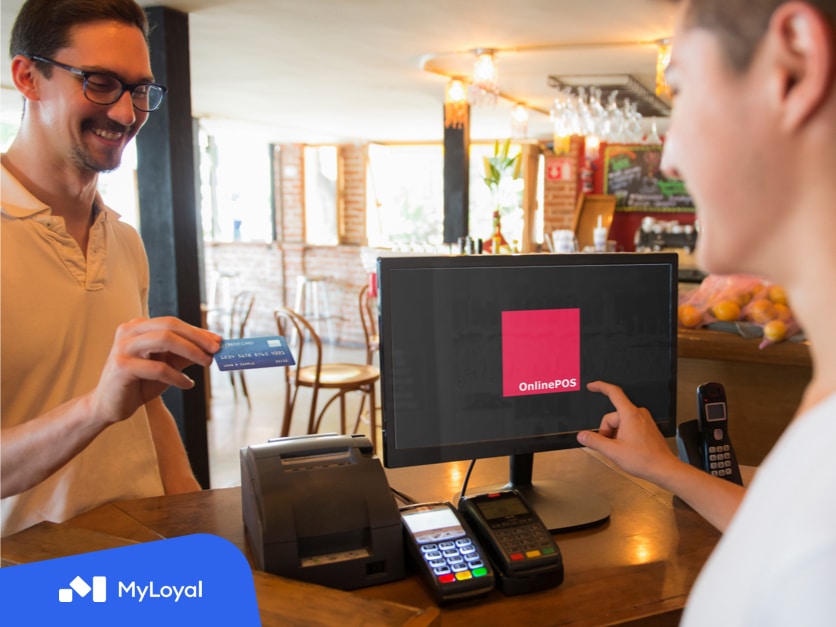
Integrated POS & Loyalty: The New Way to Know Your Customers Loyalty in business is a game-changer, and a well-run loyalty program pays for itself. Did you know that MyLoyal clients see their customer spending increase by 30% compared to non-loyalty customers? That figure speaks volumes! But have you ever wondered what the difference is between a standard loyalty program and a next-generation loyalty program? Let’s break down to see why point of sales (POS) and loyalty integrations are so crucial for every loyalty program…. Table of Contents Loyalty Programs are exciting tools that retailers can use to engage and attract customers. When a POS and loyalty program is integrated, they can identify key demographics and target certain audiences. By creating an exclusive and engaging experience, you are creating the perfect environment for customer loyalty to be built. A loyalty program alone creates a number of benefits, but a program integrated into your POS system takes things to the next level. The value of POS integration to your loyalty program Customer convenience with Real-Time Rewards The most important thing about integrating a POS into your loyalty program is improved customer experience. Card-linked loyalty enables you to have real-time rewards! Customers are able to link their debit/credit card once and instantly start to auto-earn every time they use their card. The biggest challenge of any loyalty program is that customers have to remember that they are part of it or carry cards to get loyalty points. Next-generation loyalty programs have payment card-based loyalty where customers receive points automatically by paying with the payment card. One of the most powerful features is how easily customer can check how many points they have in their balance and choose to redeem them during check out. With integrated platforms they can redeem their points anywhere, online or in-store. The ease and convenience of earning points without the customer doing much is vital for the seamless experience – which is the type of an experience your customers want. A Bond Brand Loyalty study found 84% of customers say instantly redeeming loyalty rewards improves their shopping experience – and you know what they say, the customer is always right! Reliable and more meaningful Customer Insights This is hands down one of the biggest advantages that a digital loyalty programme can bring to your business. POS integration allows you to collect valuable insights about your loyal customers and monitor their behaviour. Do they prefer buying in-store, online or one product over another? Data generated from an integrated programme provides accurate insights into consumer behaviour. Integrated POS to loyalty program gives a 360 customer overview of customer lifetime value or the average revenue per month (ARPU). Insights track everything from what items customers buy, how much it costs, what items they frequently purchase together and when purchases are made. Our system will then use this information to analyse a trend and offer deeper insights about each individual customer; when they are most likely to buy an item and when certain items are on sale they might be interested in. Clients can even go one step further and auto-segment their customers based on purchasing habits, categorise rewards according to group and your branded app to send specific one-time deals. Talk about a personalised customer experience! How to integrate Most people associate POS systems with checkout and payment software but they are capable of so much more, including supporting your company’s marketing efforts. Online POS has the potential to be integrated with a loyalty software built into the program, which can aid your marketing efforts with each sale your company makes. This can be done by collecting customer data, which can be dissected to find customers’ shopping behaviours. Having more accurate customer data will enable you to understand your customers like never before increasing your sales. The important thing to remember is what do you want from your programme? Creating a programme that has numerous bells and whistles but doesn’t align with your goals will do more harm than good. Digital loyalty programmes have a wide range of interactive features that can be totally personalised to your brand, we explore them all and their benefits here. Thankfully, MyLoyal’s solution is fully integrated with OnlinePOS making the journey to lasting loyalty much easier. What is the outcome? Digital integrated programmes allow for an overview of every step in the customer journey – a marketers’ dream! Enriched long-term planning Personalised services and products can only be delivered if you know your customer and have data to support personalisation or are able to calculate their lifetime value. Loyalty programs paired with your POS system enrich your datastream by building extensive customer profiles. The influx of reliable data reveals behavioural trends that can leverage decisions in long-term planning. Pretty much, businesses that track customer acquisition KPIs are 23x more likely to outperform their competitors. You can’t say no to that! Higher Spend Per Visit Ready for our favourite statistic? Customers spend 33% more than new customers since they already know and trust your product or service. This strategy not only increases customer lifetime value but you will also need an increase in average spend overall, by incorporating tiers and perks, customers will find it hard to resist spending that little bit extra to get to the next level Efficient lines of communication and feedback A better understanding of your customers increases the likelihood of “right message = right time”. What coffee lover wants a discount for tea right? By creating a loyalty programme, you can tap into campaign data – by doing so you will find out everything you need to know to make your campaigns more effective. Before you know it, you will be sending the right message at the perfect time; trust us, your rates will rocket. Increased Customer retention Customer retention and the intimacy of the relationship between company and customer are closely linked. Analytics help you highlight the behaviours of a customer who might be ready to leave and allow
Loyalty and Millennials: A Hate to Love Relationship

Loyalty & Millennials: A Hate To Love Relationship With many brands focusing all their efforts on the sparkly new Gen Z (the fast-developing emerging buyers who continue to dominate our headlines), it is important to remember that Millennials are the founders of our current understanding of loyalty and now have the buying power to cause seismic sales shifts for brands. Table of Contents So, while everyone is pivoting on their heels to target Gen Z… Let’s take a look at the complicated relationship between Millennials and Loyalty; what we can do to combat it & how they hold the key to the future of loyalty. Millennial loyalty has to be earned Millennials are the second-largest generation worldwide and currently the largest generation in the workforce. Now all grown up with disposable incomes and strong beliefs. They are widely regarded as trendsetters in everything from digital usage to cultural shifts, making them the sought after generation among markers. So how important is loyalty for them? While their loyalty has to be earned, according to product lead they are the most loyal generation to their favourite brands, with just over 50% saying they are extremely loyal to their favourite brands. Only 1% of Millenials say they are influenced by ads Inc Magazine This pretty much tells us that it doesn’t really matter what a company has to say about its products but more about its actions. Delivery authentic and quality experiences every time the customer has an interaction with your brand, no matter where they encounter happens will build the foundation for a strong loyalty. It is this type of brand loyalty that millennials are known and loved for. But how do we build brand loyalty in a generation infamous for a lack of loyalty? Let’s debunk this stereotype before we continue. Millennials are loyal, it is just displayed differently than most and with that, delivered differently. Gone are the days when loyalty could be built on deals and discounts, millennials have turned this on its head, only maintaining loyal to brands that offer engaging experiences and elite customer service. Technology-based loyalty-program features are more appealing to millennials; Single-handedly they have created the industry we all know today. Here are some ways to ensure you do not end up “cancelled”. Be Authentic A sales pitch means little to nothing to millennials. They are concerned with the brand’s actions, quality and community awareness. Say you are a carbon-neutral company? Prove it. What are you physically doing to reach this? Words on paper do not cut it anymore so don’t pretend to be something you are not. Millennials ( and all consumers really) are more likely to be loyal to your product if you are open about the journey you are on. “Building a carbon-neutral brand” will go a lot further than faking to be one. 90% of millennials say authenticity is an important factor when deciding which brands they like to support. And this isn’t just true of millennials: 80% of baby boomers and 85% Gen Xers reported the same sentiment. Twitter Business Digitalisation – this one shouldn’t be a surprise We live in a digital age. If you are not communicating with your customers digitally you are much further behind than you realise. Millennials are no different, in fact, millennials respond extremely well to social media messages and marketing. According to Liveperson 61% of young consumers globally would, if forced to choose, leave their wallets at home instead of their phones. (Luckily for our clients, the MyLoyal solution is contactless compatible). With today’s powerful phone capabilities, this isn’t that surprising; by creating a digital message you are insuring direct communication to your valued customers on a platform they are happy to use. 72% of millennials say social media affects their buying decisions. Bank Rate Millennials and Gen Z use social media as a way to evaluate brands’ values and their trustworthiness; online reviews, comments, likes and content all factor into whether your brand is authentic. This is a generation who have grown up with spam emails and pop-up ads, an authentic genuine presence on social media is vital to ensure you don’t fall into the untrustworthy category. Multi-Channel Marketing With digitalisation comes the opportunity of multi-channel marketing, this generation value relationships, transparency and consistency. To meet those expectations, brands must understand their audience and present a unified front on all channels. Great examples of marketing or brand development occur on as many social media channels are necessary to reach the maximum potential target audience. It is similar to multi-channel loyalty! Offering more than one way to build loyalty will draw a larger, more loyal audience. Millennials no longer require communication in person or by telephone. They seek multi-channel communication that creates valuable content relevant to their interests and beliefs. Consumers trust brands that have a dominant social media presence, they check Facebook for reviews, Instagram to see the product in function and Youtube to watch tutorials on how to use it. A strong multichannel marketing strategy builds trust between consumers and sellers, building a strong relationship and therefore… loyalty! Incentives and Awards It’s true. Millennials do love a bargain; brand incentives and rewards can result in heavy millennial traffic, as long as they are accessible and easily applicable. Millennials aren’t just looking for monetary rewards, they want something shareable! An experience, a memory with the brand! When a brand offers an inclusive and desired experience, it naturally generates organic exposure necessary to the social media platforms… word of mouth? Yes, please! However, long-term brand loyalty cannot be built this way; quickly millennials will explore what else the brand has to offer and if it does not meet their expectations, they will leave. The combination of an authentic brand that can offer genuine incentives and awards will find great success in the world of millennial brand loyalty. The future of customer loyalty ( & its tech!) is in the Millennials’ Hands: As we said before, Millennials are not a generation to forget.
Guide: Community Based Loyalty
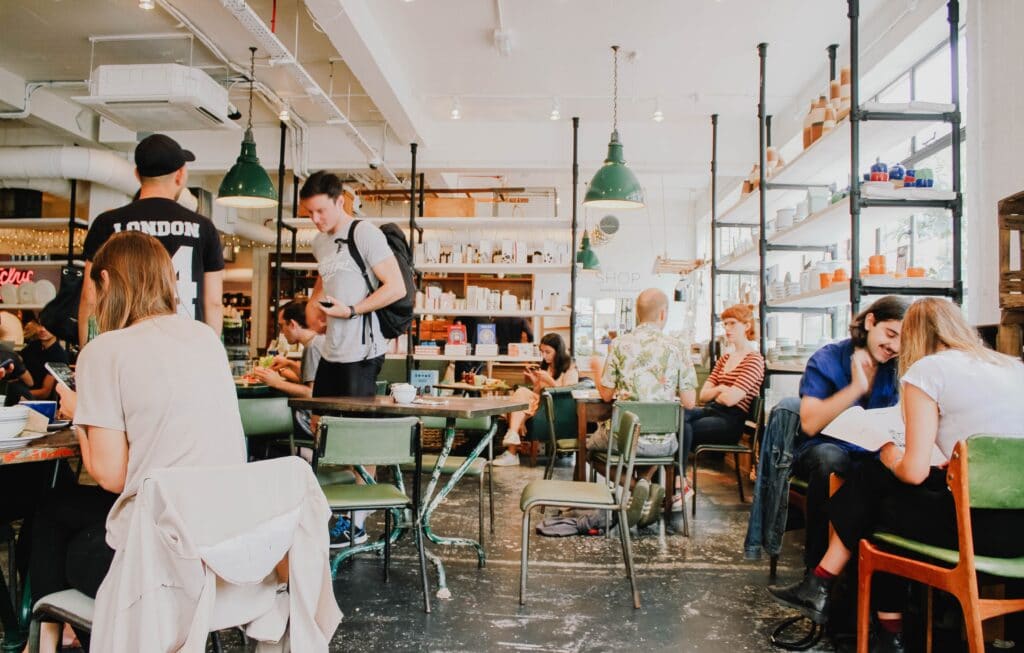
Guide: Community Loyalty – What is a Community Based Loyalty Programme? Let’s explore the role and benefits of community loyalty programs; how do they work exactly? What are the steps in creating a solid community-based loyalty program? And in what ways can a substantial solution help you stand out from the competition? Table of Contents Community Based Loyalty Programmes are growing in popularity daily. Why is that? Emotional loyalty is on par with monetary, the feeling of belonging must be created to have a successful community-based loyalty program. It is time to understand what precisely makes them unique. What is a community based loyalty programe? Arguably a unique loyalty program, mainly being found as an add-on to other loyalty programs, creating the incredible potential for new touchpoints to your loyalty programme framework. Community loyalty programmes focus on providing the opportunity for customers to interact with like-minded people, helping you reinforce your relationships with your customers. By becoming a member, customers gain access to discounts and rewards or sometimes just the opportunity to join a community of similar people (we can take an example of sports club). In addition, members can be part of a safe space to transfer tips and tricks, guide other members on how to install and discuss upcoming events! Or sometimes it could be about getting to access news first or being part of a special club. Communities are designed to foster maximum customer engagement via community-level bonding, providing brands with a unique way to stay competitive in the fierce industry competition. Take Sephora as an example; the introduction of their loyalty programme “The Beauty Insider” in 2007 changed their position in the industry, by creating a community of like-minded people who engage with their platform on a regular basis. Benefits of a Loyalty Community: Engage Customers Through Their Preferences: Communities establish a special environment for customers to discuss your products and get the interested members to participate with others. They create an opportunity for businesses to create another initiative that aligns with their beliefs, for example, a specific sustainability initiative can be created and protected within the community. The important thing to understand with community programs is that customers will only join if the community syncs up with their personal preferences and interest. You aren’t going to join a group you have no interest in after all! When creating your community it is vital you understand your customer and carefully consider what will be the interesting subject of the platform. Essentially this would be done by further analysis of large volumes of customers data you already have. Understand your customers like never before: While not all your customers will become members of the loyalty community, you will have an opportunity to get a better understanding of your customers. This will further enable you to create more personalised offers for the members within your community; and with customer experience only growing with importance, it seems silly to not take advantage of. Despite this, you must ensure these personalisd offers are created in sync with your brand, as that is what they signed up for. Build Brand Image: In the current industry, brands are swiftly starting to realise how crucial it is to constantly maintain a positive brand image. By attracting customers having specific interests via your loyalty community, you build the message of your brand being linked with a distinctive sense of belonging. This projects a positive image of your brand, creating stronger customer loyalty while also maintaining a competitive edge. Develop an Exclusive Loyalty Program: As we mentioned earlier, community loyalty is often added on alongside an existing loyalty program, by doing so, you are effectively strengthening your ongoing program. By creating this combination, let’s call it a hybrid program, you are adding an extra element of interest, providing more reason for your customer to opt-in for your loyalty program. Grow Customers Loyalty : Brand loyalty is vital. We all know that. A sense of community helps transform your existing customers into marketers for your brand! By creating a group or platform for your customers to share ideas and do a lot more interesting things with other members, you are actually winning their affection. Subconsciously, happy customers automatically become encouraged to share their emotions of delight with their friends and family; spreading a positive message about your brand! By creating a loyal community, you are encouraging and nurturing these customers more, motivating them to share their happy experiences further. Word of mouth is a very powerful tool. Let’s Summarise: Overall, with emotive rewards becoming equal to monetary rewards, a community-based loyalty program provides the key stepping stone to creating a strong and dedicated community, which creates brand-loyal customers. Like what you have read? Sign up to our newsletter By entering your email address, you consent to our Privacy Policy We can help your business to grow Book A Demo
Loyalty Analytics: Expectations vs. Reality
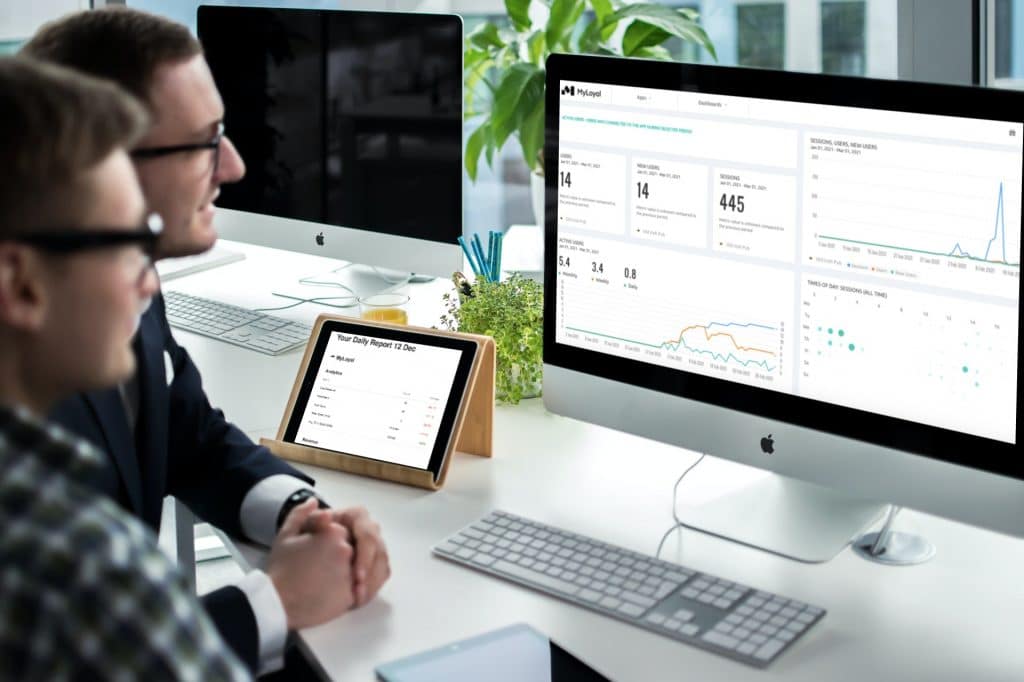
Loyalty Analytics: Expectations vs. Reality This article reveals some loyalty analytics expectations vs. reality to help you navigate loyalty software solutions choices. Table of Contents Share on facebook Share on twitter Share on linkedin Share on whatsapp Share on email Let’s begin with a conclusion – customer loyalty programs without analytics is like driving somewhere not knowing either the road or direction. Therefore, customer loyalty analytics is a crucial part of the loyalty solution and equally important as an actual loyalty program as it helps to understand if the loyalty program is working. Data itself is useless without analysis – that’s why a self-service analytics hub is a must for every loyalty software solution. However, loyalty analytics is not only about tracking how many users you have or how many points you reward. It is about increased customer visibility and a deeper understanding of individual customer behaviour, which helps define personalised offers that trigger brand loyalty and advocacy. But how can loyalty analytics boost up your business growth? Improved Customer Retention Customer retention and the intimacy of the relationship between company and customer are closely linked. Retaining customers is about more than just transactions, it is about building relationships. Analytics help you highlight these customers before they switch to your competitor. Loyal customers bring you better revenue and are easier to keep than attracting new customers. A stepping stone on the journey of business growth. Increased Customer Lifetime Value We have said it once and we will say it again, customers spend 33% more than new customers since they already know they love your products or service! Personalised services and products can only be delivered if you know your customer and have data to support personalization or are able to calculate their lifetime value. Pretty much, businesses that track customer acquisition KPIs are 23x more likely to outperform their competitors. A win-win! Improve Customer Experience Analytics provide insight into customers behaviour and personal preferences. 49% of buyers make increased purchases after receiving a more personalised experience. Slowly, over time a closer relationship will be developed which is vital when trying to keep the level of customer experience that is now expected. “Customer Experience is not going away, but its value proposition is stalling because many of fundamentals of CX are now commonplace and no longer enough for differentiation and growth” Accenture 2021 With a high standard of customer service now being expected, analytics help create a competitive advantage in a competitive industry. Which means growth, growth, growth. Save time and money on marketing! Reduced costs are always a goal for a business. It is often the way that social media and paid advertising can be very expensive, with the award not always being clear to see. Analytics can help ensure the money you are investing is going to the areas where you are going to reap the most reward. Which KPIs are the most important to track? So let’s discuss the main KPIs (key performance indicator) every loyalty program app should track. First, let’s start with the daily KPIs. These are important to understand to have a pulse on loyalty performance and plan daily campaigns or activities. Customer enrolment – A standard KPI, which helps you to track customer enrollment in your programme. Who is in your community/ contact list? This is a great way to track if your community is growing. Number of daily/weekly/monthly loyalty app users – How often is your community engaging? An important figure when it comes to budgeting for campaigns and creative scope. Number of transactions – How many of your customers are purchasing from you? This is important to see if your customers are actually spending? If customers are often visiting your store/website but are not purchasing there could be something wrong with your customer journey. This could be anything from customer experience to the product itself. Amount of revenue per loyal customer – How much are your loyal customers spending? This value, compared with the average basket, helps you to assess your loyalty program value. So keep checking! The second step is to get an overall customer overview, or how it is commonly called a 360-degree view of your loyalty program customers. Behaviour analytics would help put a face on every customer and understand their actual habits. Based on that, you can plan your future campaigns and improve personalisation. Need a refresher on why a more intimate relationship between customer and company is important? Freshen up here. Back to customer overview, important KPIs to track: Most common days of checking loyalty app or buying goods and services – What days are your customers most active? These are the days you should be pushing out your brand new content; such as news or new offer campaigns. Take advantage of the organic engagement you are achieving and grow from there! Most favourite places to visit – Work out if your customers are frequent visitors at one specific location. This allows you to take advantage of global and regional campaigns. Purchasing behaviour – It is important to track the purchasing behaviour of your customers. Do some customers only shop in the winter? May be worth providing a discount code before the winter season to encourage them to return to you over a competitor. Bottom line contribution: points awarded, campaign redemption, etc – Do you want to understand your loyalty program engagement. Then track your rewards redemption, points awarded and understand what triggers customer behaviour. Devices/platforms customers use – This one pretty much explains itself. Are your users using Google or Apple products more? Chrome or Safari? The most read news, offers, events- is the content you are creating resonating? Are some events or offers not seeing a lot of interaction? Maybe worth investing the time and resource into content that will have more interaction Last and most important is defining segments that require the most attention, either converting them to loyal customers/brand advocates, retaining them, or just rewarding their fantastic